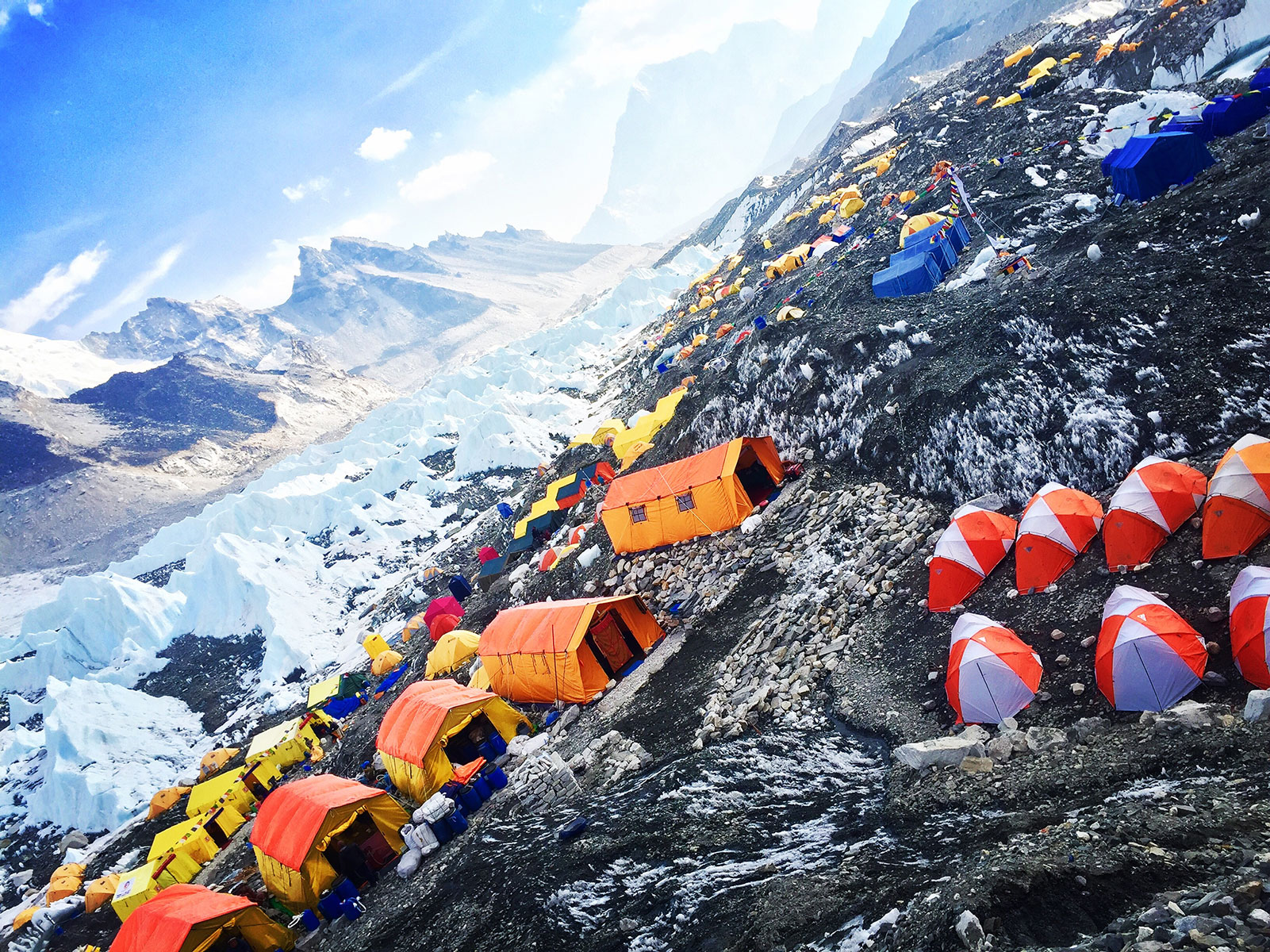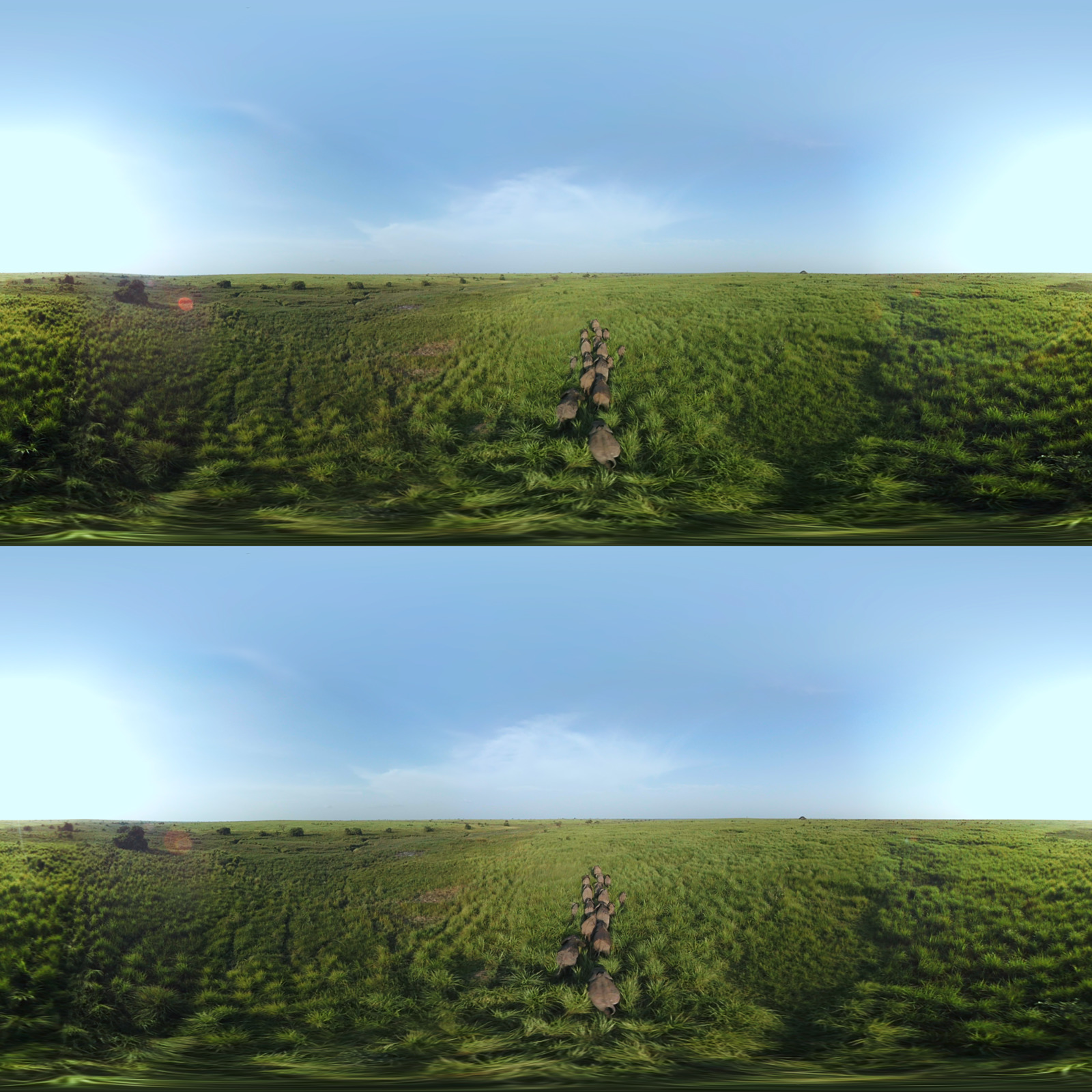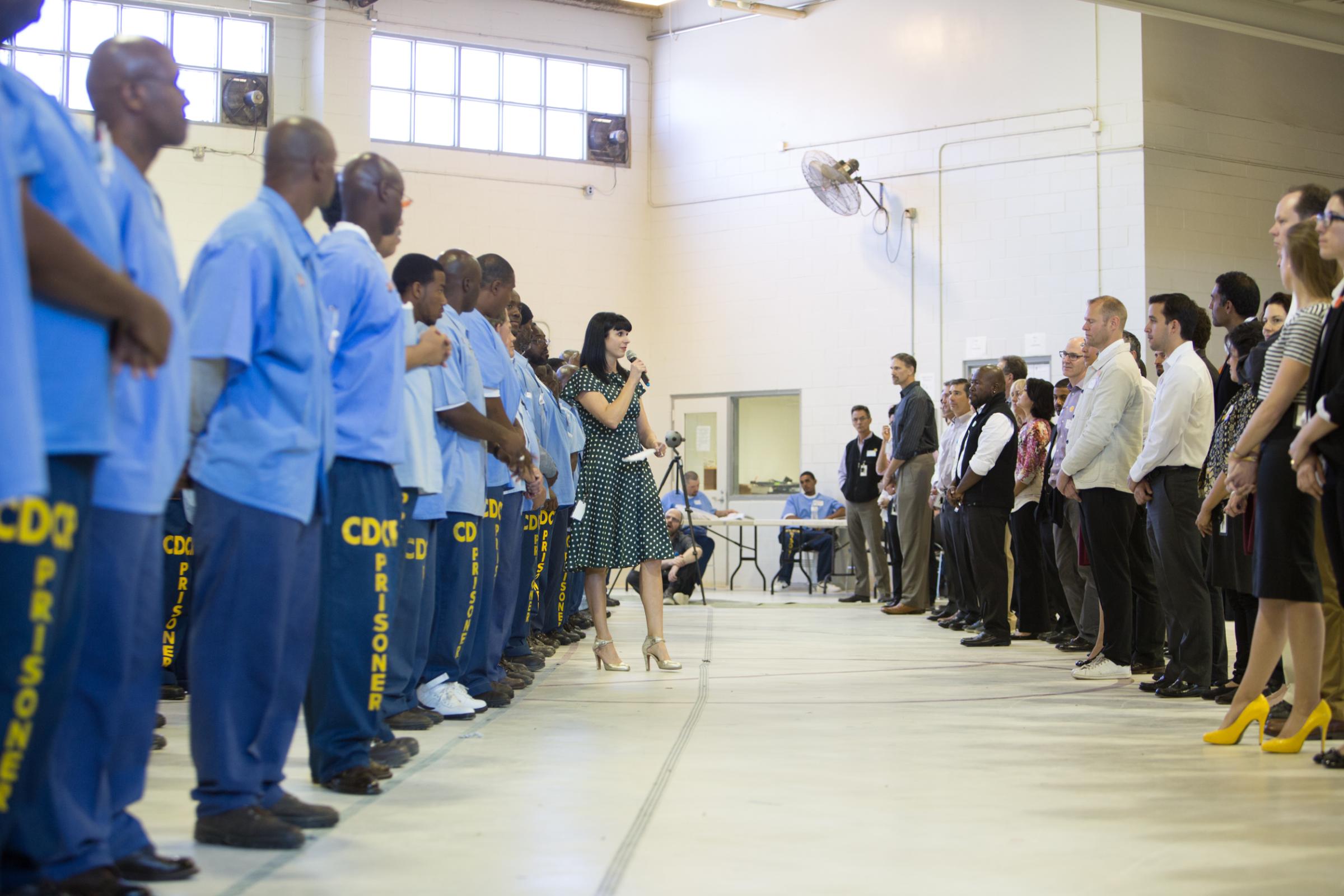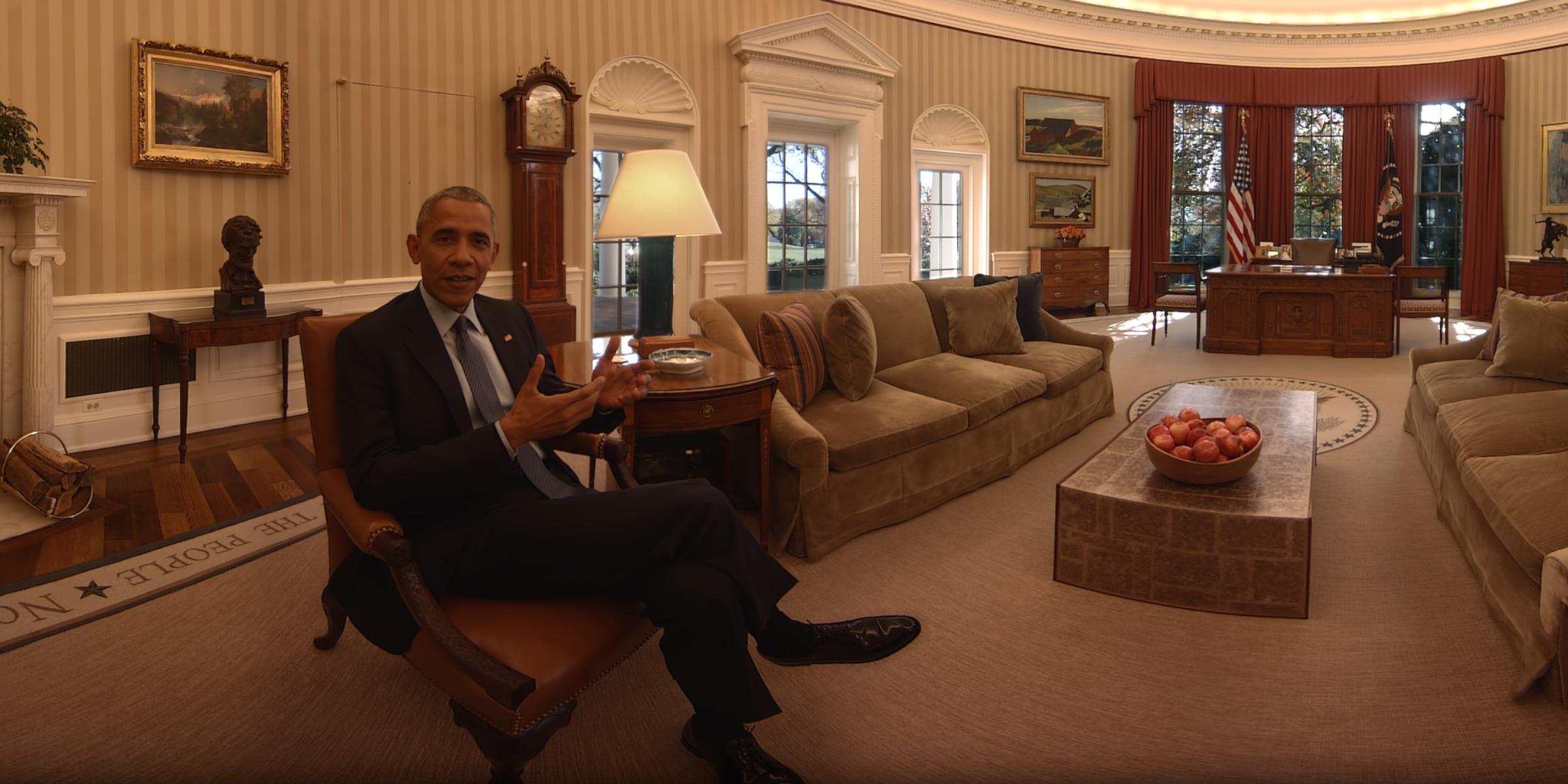
No need to attend festivals or buy expensive viewing gear to live some of the most moving virtual reality documentaries; in fact, many can be experienced from the comfort of one’s living room provided you have a smartphone − ideally of the latest generation − and a good internet connection or data plan.
Though a headset, even a do-it-yourself cardboard one, is useful to block out your surroundings and immerse yourself more fully in the world, there is also something to be said about trying them as 360-degrees experiences. The juxtaposition between your world and the one on your device can create stirring moments. When a view of a destroyed street in Syria lines up with your hallway, it is hard not to project yourself and think of what it would feel like if you were to open your door to a war zone. It brings the story home.
Since the New York Times launched with fanfare their NYT VR app in November 2015 by sending out Google Cardboard viewers to over a million of their subscribers, several media organizations have followed suit. Many developed their own application (DiscoveryVR, LIFE VR, WSJ VR, for instance); some, like The Guardian with “6×9”, built an app dedicated to a singular experience; while others, partner with existing VR companies.
But prominent members of the fourth estate are not the only ones creating compelling content. Tech companies, film studios and individuals are also using the latest innovations to share the stories that matter to them.
Here are a few of the most recent productions that have caught our attention.

Under the Cracked Sky by The New York Times
On the edge of the world, at McMurdo Station in Antarctica, a group of researchers monitor life under the ice. Their job involves diving through a small hole into in frigid waters, the clearest in the world. Two of them, Rob Robbins and Steven Rupp, invite you to join them thanks to VR.
To give the impression that you’re swimming with them rather than being carried by them, the New York Times team provided them with a customized underwater rig strapped to a nine feet pole. This way the diver handling it would recede in the background and, thus make way for majestic and unparalleled views of frozen seawater stalactites, ice caves and rocky black seabed. “We told them: ‘essentially you’re swimming with a person’s head down there, so act accordingly: avoid sudden movements, twisting and turning, or changing speed too quickly,” explains Graham Roberts, one of the producers.
They recorded several dives over the course of one week, which were then edited into one mesmerizing and illuminating experience. Much of the time is spent gazing upwards, marveling at the light streaming through the ice while also considering how dangerous such a dive is − the way in is also the only way out −, and looking for the cheeky seals whose calls you can distinctly hear around you. “It checked all the boxes for a VR project,” adds Robert. “It takes people somewhere they couldn’t otherwise go to, it deals with an important topic, climate change, and it provided us with the opportunity to record unique imagery.”
Time: 9 minutes
App: NYT VR

The Protectors: Walk in the Ranger’s Shoes by National Geographic
The numbers associated with elephant poaching are staggering. The Great Elephant Census recorded a population drop of 30% between 2007 and 2014 to just over 350,000 beasts. The decline is mostly due to poaching, which claims a life every 15 minutes. Simply put, at this rate, the large mammal could be extinct within the next 12 years.
To stop the massacre, park rangers risk their lives. In Garamba National Park in the Democratic Republic of Congo, for instance, nineteen of them have been killed in action over the past decade. “These men are unassuming heroes and we wanted to tell their stories in a way that is multifaceted. As you journey into the savannah, you’re also journeying deeper and deeper into their minds and psyches,” says Imraan Ismail, who worked with Oscar-winning film director Kathryn Bigelow on this project.
Embedded with these wildlife watchmen, he filmed their daily lives from their time at home with loved ones, to their swift training and the tense patrols. He asked them about their relationship to the animals, to each other, and to their most often invisible enemies. The immersive experience, which at times was filmed by the rangers themselves as they trail elephants and go after poachers, gives you a sense of how unnerving it is to move through the bush when danger lurks all around.
Time: 8 minutes
App: Within

Capturing Everest by LIFE VR
Many have tried to convey what it is like to climb Mount Everest, the highest peak on earth. Adventurer Jon Krakauer described it in words in “Into Thin Air,” blind mountaineer Erik Weihenmayer had his ascent filmed for “Farther than the Eye Can See,” Liam Neeson narrated an IMAX documentary, and the list goes on. It was a matter of time before people took VR cameras to the top of the world. So, it comes as no surprise that the LIFE VR team, in association with Sports Illustrated, would try their hands at it too.
While the footage was already shot when it fell into their hands, they’re the ones who turned it into a mini-series that follows the adventure of Jeff Glasbrenner, who lost his leg in a tractor accident as a child, and Lisa Thompson, who was recovering from cancer. “There was a lot to communicate: the inspiring journeys of Jeff and Lisa, the dangers associated with the climb, the long periods of waiting for the conditions to be favorable, the life at basecamp, the importance of the Sherpas, etc.,” says Mia Tramz, Managing Editor at LIFE VR [LIFE VR is a Time Inc. company]. “It’s a story about climbing Everest, but it’s also one about human nature.”
Each of the four chapters focuses on a different challenge: getting ready, making it to basecamp, navigating the treacherous Khumbu Icefall and reaching the top. “Everyone wants to see what it’s like to get to the summit,” says Glasbrenner. “But, to me, the most representative scenes are those in the tents. You have to stay motivated while waiting for the conditions to allow you to continue. You miss your family and the comforts of home while also battling self-doubt.” Though it helped his family and friends better understand exactly how much of a feat it was to reach the peak, he also acknowledges that some experiences are impossible to capture, especially how “the lack of oxygen makes everything so much more difficult, even putting your shoes on is an effort.”
Time: 4 episodes of approximately 9 minutes each
App: LIFE VR

Step to the Line by Ricardo Laganaro with VR for Good
Inside a California maximum-security prison, inmate and volunteers face one another. A facilitator from Defy Ventures, a training program for currently and formerly incarcerated Americans, asks those who relate to the statements she read to move forward. “I heard gunshots in my neighborhood growing up”: most prisoners take a step. “I’ve earned a four-year college degree”: the tables turn. “I’ve done criminal things for which I could have been arrested, but did not get arrested”: most of the people present step to the line and shake hands. The 360-degrees camera is set in the middle of the two rows putting you in the middle of this social experience.
This sets the stage for us to meet Trebian “Tre” Ward, one of the convicts. As Ricardo Laganaro, who took part in Oculus’ VR for Good initiative that paired filmmakers with non-profit organizations to explore immersive technologies’ promise to foster empathy, was developing the project, he realized that there are a lot of misconceptions regarding what it is like to be in prison. “We think we know what it’s like because of all the movies,” says the Brazilian artist. “But you don’t, actually. Especially the cell, it’s really different from what you see in films that portray it as an empty space. In VR you can look around and see the wardrobe, the cabinet, and the belongings of the two inmates that share it. There’s a lot in there. My main goal was to provoke a transformation of the viewer’s opinion. I want him to move from being scared of the guy, to understanding a little bit of his past and current struggle, to cheering for him and thinking about the future, not what he did anymore.” Mission accomplished.
Time: 11 minutes
App: Facebook

People’s House by Félix & Paul
For all those who miss seeing Barack Obama in the White House, your prayers have been answered. Thanks to the “People’s House,” a project by the Montreal-studio Félix & Paul, you can visit America’s most famous home with the 44th President and First Lady as your guides.
Thanks to a custom-designed robotic platform, it feels as if you’re moving seamlessly through the different spaces as your prestigious docent share historical tidbits and personal anecdotes about 23 of the rooms.
Filmed over five days at the end of Obama’s tenure, the immersive experience is an opportunity for the former First Family to reflect on their time at 1600 Pennsylvannia Avenue. You learn that Obama’s first impression of the Oval Office was that it wasn’t “as big as I imagined it on television,” while it took Michelle months to feel like she was at home rather than in a museum.
Time: 22 minutes
App: GearVR and YouTube
Laurence Butet-Roch is a freelance writer, photo editor and photographer based in Toronto, Canada. She is a member of the Boreal Collective.
More Must-Reads From TIME
- The 100 Most Influential People of 2024
- The Revolution of Yulia Navalnaya
- 6 Compliments That Land Every Time
- What's the Deal With the Bitcoin Halving?
- If You're Dating Right Now , You're Brave: Column
- The AI That Could Heal a Divided Internet
- Fallout Is a Brilliant Model for the Future of Video Game Adaptations
- Want Weekly Recs on What to Watch, Read, and More? Sign Up for Worth Your Time
Contact us at letters@time.com